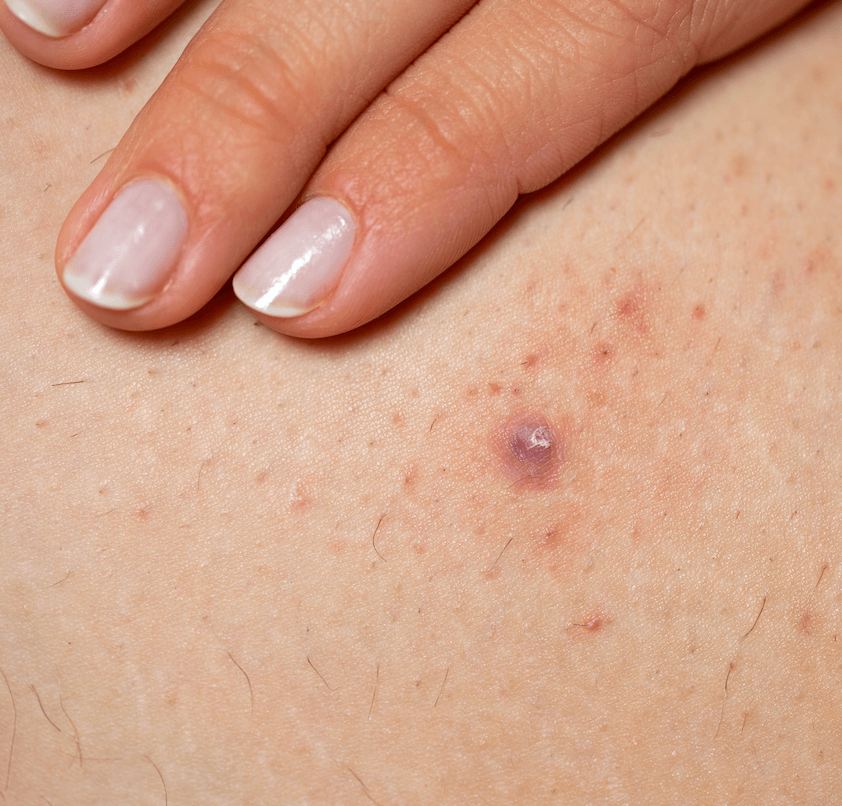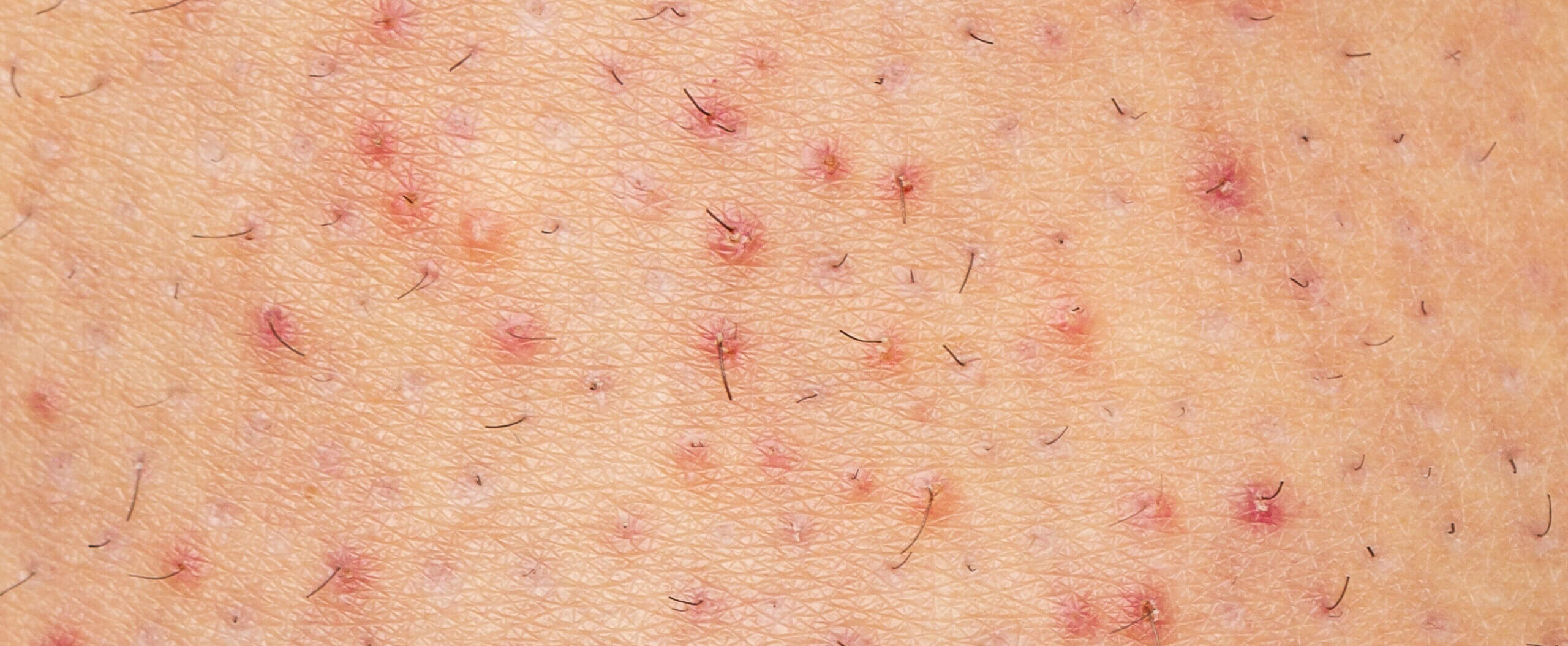Folliculitis
Folliculitis can occur anywhere on the skin.
If you have ever had extreme itchiness on the surface of your skin for no apparent reason, there’s a good chance that you had folliculitis. Your hair follicles are surprisingly fragile and are prone to becoming infected and causing severe itchiness and discomfort. While folliculitis can be caused by outside elements not in your control, it can also result from not maintaining proper hygiene.
Folliculitis can occur anywhere on the skin. It starts when hair follicles are damaged or when the follicle is blocked. For example, this may occur from rubbing against clothing or shaving. Most of the time, the damaged follicles become infected with staphylococci bacteria.
Ingrown hairs, particularly in the beard region, may be confused with folliculitis because they result in mild inflammation and irritation. Since there is no actual infection present, this condition is referred to as pseudo folliculitis. The best method of prevention of folliculitis is meticulous skin hygiene and careful maintenance of the chlorine level in hot tubs.
Hair removal is the most common treatment for people struggling with ingrown hairs, including Laser Hair Removal. Even after just one treatment, you can see a reduction in ingrown hairs and a reduction of scarring they produce. We use topical numbing and integrated cooling for all our hair removal patients to ensure their comfort throughout their treatment.
Some treatments may include an antibiotic cream or ointment, or a medicated shampoo if the scalp is affected. Antibiotics in pill form can be prescribed for infections deeper in the skin. Mild cases can heal on their own, but more severe cases may need treatment.
Contact Devonshire Dermatology today to learn more about folliculitis treatments.


Consultation
- Detailed history of your skin concern
- Total skin examination
- Holistic assessment of your health
- Diagnosis
- Discussion of treatment options
- Personalised treatment plan
- Treatment
FAQs
Folliculitis is a skin problem that happens when you get bacteria or a blockage in a tiny pocket in your skin called a hair follicle. You have hair follicles just about everywhere except your lips, your palms, and the soles of your feet. Folliculitis can make these hair follicles red and swollen.
You can get this condition anywhere you have hair, but it’s most likely to show up on your neck, thighs, buttocks, or armpits. You can often treat it yourself, but for more severe cases, you may need to see your doctor.
Different kinds of folliculitis have other names you might have heard, such as:
- Barber’s itch
- Hot tub rash
- Razor bumps
- Shaving rash
See answer

Some groups of people are more likely to get certain types of folliculitis. For instance, if you have a beard that you often trim, you’re more prone to having inflamed skin on your chin and cheeks.
In general, you’re at higher risk for folliculitis if you have a high body weight, live with diabetes, take antibiotics for a long time, or have a weak or suppressed immune system.
See answer

Most of the time, folliculitis isn’t spread from person to person. But there are a few exceptions. If your folliculitis is caused by a germ that lives naturally in water or soil, it could infect other people, too.
If you get a rash after sitting in a hot tub, other people who sat in the tub are also likely to get it.
See answer

Your symptoms will vary based on the exact type of folliculitis you have and how bad it is. You may have:
- Groups of small bumps like pimples, some with whiteheads on them
- Blisters that break open, ooze, and become crusty
- Large areas of swollen skin that may leak pus
These areas of your skin may be itchy, tender, and painful as well.
See answer

Staph bacteria is most often to blame. You have staph on your skin all the time, and it normally doesn’t cause any issues. But if it gets inside your body, say through a cut, it can cause problems.
These other things can also cause folliculitis:
- Blockages from skin products, such as moisturizers with oils
- A fungus
- Hair removal, such as shaving, waxing, and plucking
- Ingrown hairs
- Other bacteria, such as the kind you might find in a hot tub
- Some drugs, such as corticosteroids that are used to ease inflammation
In general, you’re more likely to get the condition if you have damaged follicles. This can happen from things such as shaving, skin injuries, sticky bandages, and tight clothes.
See answer

Most of the time, folliculitis goes away with a little self-care at home. But let your doctor know If you have:
- Firm, painful bumps
- Pus drainage
- Bumps that are spreading
- Fever
- Chills
- Fatigue (feeling tired)
- A rash that clears up, then comes back
- A rash that gets worse
See answer



